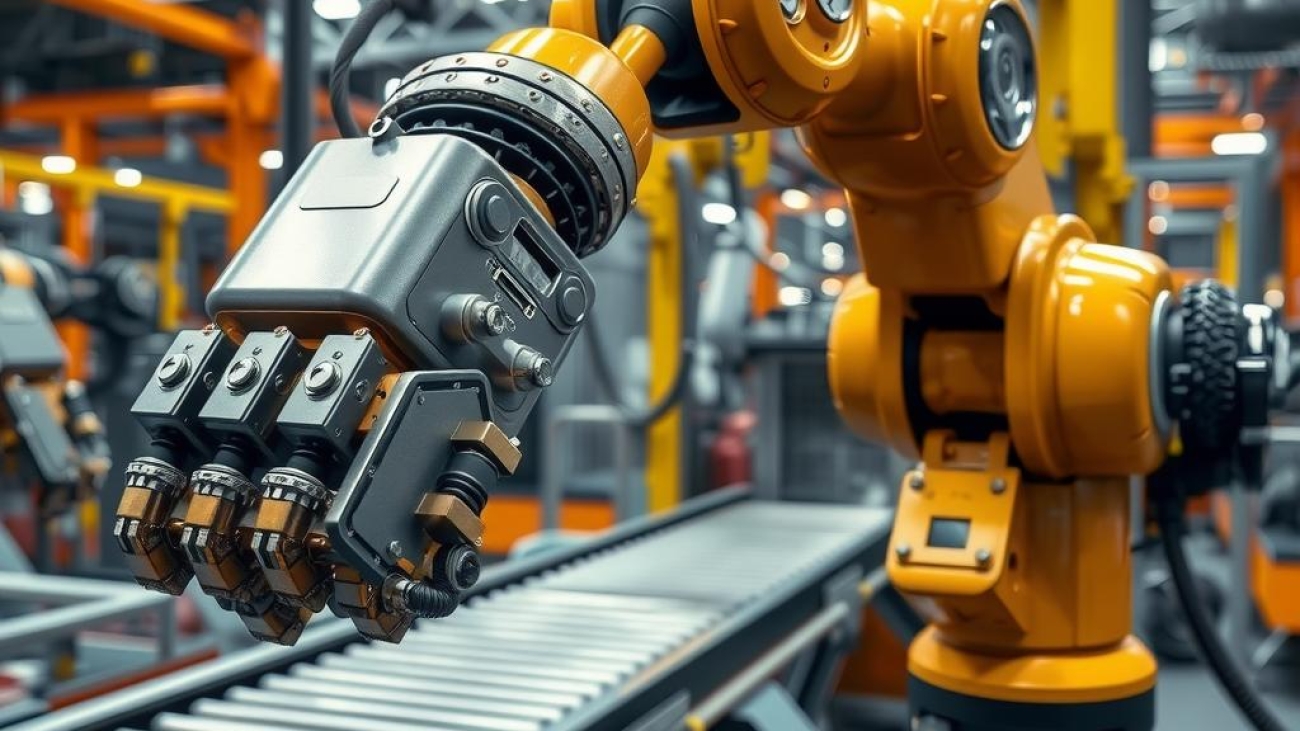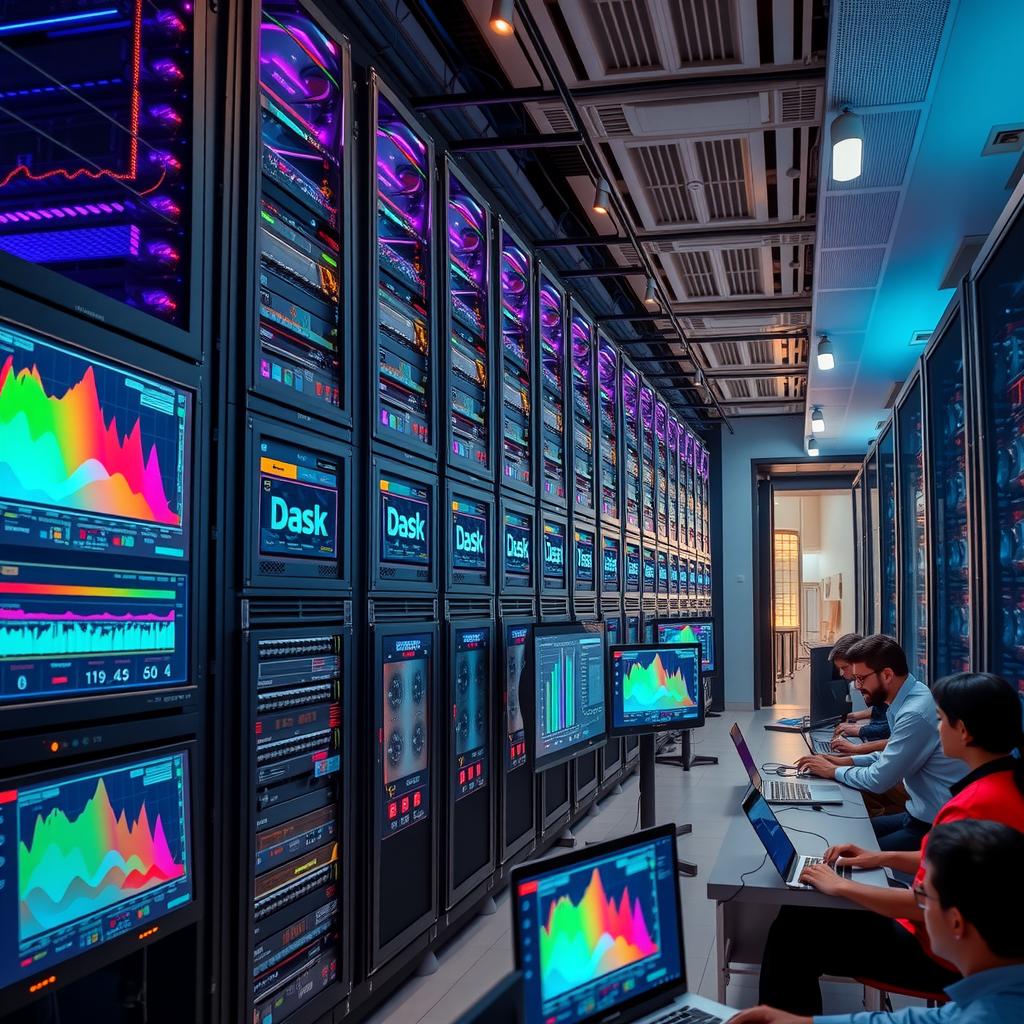In the world of machine learning, where precision and accuracy are paramount, a pressing question looms: Which algorithm reigns supreme in the realm of credit scoring? As financial institutions increasingly rely on data-driven decision-making, finding the best-performing model becomes crucial. The competition between XGBoost and LightGBM, two leading frameworks for gradient boosting, has sparked significant interest among data scientists and analysts alike. These algorithms not only promise enhanced performance but also offer unique advantages that can transform how organizations approach predictive modeling in credit assessments.
At the heart of this discussion lies an intricate performance analysis that delves into how each algorithm performs under various conditions. Both XGBoost and LightGBM have garnered acclaim for their ability to handle large datasets effectively while minimizing overfitting—a critical factor when evaluating loan applications or creditworthiness. However, understanding which tool excels with specific evaluation metrics is essential for practitioners seeking optimal results in their models. This article aims to dissect these differences through rigorous comparison, shedding light on strengths and weaknesses inherent in both frameworks.
Moreover, as financial markets evolve rapidly with increasing data complexities, leveraging advanced techniques like those offered by XGBoost and LightGBM can provide a competitive edge. By analyzing their respective performances across varied scenarios—ranging from parameter tuning to runtime efficiency—this exploration intends to equip readers with actionable insights that inform their choices when selecting algorithms for credit scoring tasks.
As we embark on this journey through comparative analysis and empirical evaluation, readers will uncover valuable lessons about selecting the right tool based on specific project requirements. Whether one prioritizes speed or accuracy may ultimately dictate whether they lean towards one algorithm over another; thus positioning themselves advantageously within the landscape of machine learning applications in finance.
Join us as we navigate through this insightful examination of XGBoost vs LightGBM: Performance Analysis in Credit Scoring, offering clarity amidst complexity while ensuring informed decision-making thrives at every level of analysis.

Key Insights:
-
Algorithm Performance in Credit Scoring: A comparative analysis of XGBoost and LightGBM reveals their respective strengths in handling credit scoring tasks. Both algorithms excel in performance analysis, but their unique mechanisms may lead to different outcomes depending on the dataset complexity.
-
Evaluation Metrics for Model Comparison: When assessing the efficacy of predictive modeling solutions like XGBoost and LightGBM, various evaluation metrics such as accuracy, speed, and scalability come into play. This thorough examination helps financial institutions make informed decisions regarding algorithm selection tailored to their specific needs.
-
Impact on Data Analysis Practices: The integration of effective machine learning methods such as XGBoost and LightGBM can significantly enhance data analysis practices within finance. Understanding the nuances between these two powerful tools equips organizations with insights that can shape robust credit scoring strategies, ultimately influencing risk assessment processes positively.

Performance Analysis of XGBoost and LightGBM in Credit Scoring
Understanding Algorithm Efficiency in Financial Decision-Making
In the realm of credit scoring, evaluating the performance of machine learning algorithms is paramount for making informed lending decisions. Two prominent models, XGBoost and LightGBM, have garnered significant attention due to their efficiency and accuracy in predictive modeling tasks. Both algorithms utilize gradient boosting techniques but differ fundamentally in their approach to data handling and processing speed. XGBoost, known for its robustness against overfitting, employs a regularization technique that enhances model interpretability while maintaining high performance across various datasets. In contrast, LightGBM focuses on histogram-based approaches to reduce memory consumption and increase training speed, making it particularly suitable for large datasets common in credit scoring scenarios. A performance analysis comparing these two models reveals distinct advantages: where XGBoost excels with smaller datasets or when dimensionality reduction is necessary due to its effective feature selection capabilities, LightGBM shines when working with massive amounts of data that require quick turnaround times.
Comparative Insights into Model Performance
Evaluating Metrics That Matter
When conducting a thorough evaluation of algorithm performance within credit scoring contexts, it is essential to consider various evaluation metrics such as accuracy, precision, recall, F1 score, and area under the ROC curve (AUC). These metrics provide insights into how well each model discriminates between good and bad credit risks. Research has shown that while both XGBoost and LightGBM can yield comparable results regarding overall accuracy rates—often exceeding 80%—their underlying mechanics lead to varying performances depending on specific attributes of the dataset utilized. For instance, studies indicate that using imbalanced datasets often tilts favorably towards one model over another; here again emerges a nuanced picture: while XGBoost may deliver better precision at lower thresholds when misclassifying negative cases has severe consequences (e.g., loan defaults), LightGBM’s ability to handle larger sets without compromising speed makes it attractive for real-time applications demanding swift decision-making processes.
Practical Implications for Financial Institutions
Making Data-Driven Decisions
The implications of choosing between these two powerful algorithms extend beyond mere numerical outcomes; they touch upon operational efficiencies within financial institutions as well. As organizations increasingly rely on data-driven strategies for risk assessment purposes—especially given rising concerns about consumer privacy—the choice between utilizing XGBoost or LightGBM becomes critical not only from an analytical standpoint but also from an ethical perspective related to transparency in automated decision-making systems. The ease with which users can interpret results obtained through either method greatly influences stakeholder trust levels—a vital element when engaging with customers directly affected by credit evaluations based on algorithmic outputs.
Future Directions: Enhancing Predictive Modeling Techniques
Embracing Innovation in Machine Learning Applications
Looking ahead at future trends shaping machine learning applications within finance suggests an ongoing evolution toward ensemble methods integrating innovations like deep learning alongside traditional techniques such as those offered by both XGBoost and LightGBM frameworks alike . As artificial intelligence continues transforming industries worldwide—including banking—the potential benefits derived from refining existing models cannot be overstated; improvements made today will pave pathways toward more accurate assessments capable of adapting dynamically amidst shifting economic landscapes . Ultimately , understanding how different algorithms perform enables stakeholders across sectors—from regulators overseeing compliance requirements through lenders assessing borrower profiles—to make better-informed choices based upon robust analyses grounded firmly within advanced statistical methodologies driven forward by cutting-edge technological advancements inherent throughout this evolving field.
The Imperative of Comparative Metrics in Financial Algorithms
A Deep Dive into Accuracy, Speed, and Scalability in Financial Institutions
In the realm of financial institutions, algorithm selection hinges critically on comparative metrics such as accuracy, speed, and scalability. These factors not only influence the effectiveness of predictive modeling techniques but also determine how well a financial institution can navigate complex data landscapes. XGBoost and LightGBM, two prominent machine learning algorithms known for their performance analysis capabilities, have emerged as frontrunners due to their ability to handle large datasets with remarkable efficiency. Accuracy is paramount; it reflects an algorithm’s capacity to make correct predictions based on historical data—a crucial requirement for tasks like credit scoring where miscalculations can lead to significant financial repercussions. Both XGBoost and LightGBM excel at delivering high levels of accuracy through advanced gradient boosting techniques that optimize decision trees.
Speed is another vital consideration when evaluating algorithms used by financial institutions. In environments where milliseconds can mean the difference between profit and loss—such as high-frequency trading or real-time fraud detection—efficient processing times are essential. Here again, XGBoost shines due to its parallel processing capabilities while LightGBM takes advantage of histogram-based learning methods that expedite training time significantly without sacrificing model performance. By employing these algorithms strategically, organizations can ensure rapid responses to market changes or fraudulent activities while maintaining robust security protocols.
Understanding Scalability: A Key Factor in Algorithm Selection
The Role of Efficient Data Handling in Financial Modeling
Scalability refers to an algorithm’s ability to maintain performance efficacy as data volume increases—a fundamental characteristic needed within finance’s continuously expanding datasets. As firms gather vast amounts of transactional information daily, leveraging scalable solutions becomes indispensable for effective data analysis and model comparison efforts across different scenarios such as risk assessment or loan approval processes. With their inherent structural advantages over traditional algorithms—for instance through efficient memory usage—both XGBoost and LightGBM provide scalable architectures that facilitate seamless integration into larger systems without compromising computational resources.
Moreover, scalability intersects directly with evaluation metrics employed by financial analysts seeking optimal algorithmic performances under diverse conditions. For example, when conducting credit scoring assessments using historical loan repayment records combined with current economic indicators (like interest rates), having a scalable solution allows analysts not just flexibility but also adaptability in refining models based on new insights gleaned from accumulating data streams over time.
Performance Analysis: Balancing Trade-offs Between Metrics
Navigating Between Different Algorithm Strengths
In practice, achieving a balance among accuracy, speed, and scalability often involves trade-offs contingent upon specific use cases within financial operations. While both XGBoost and LightGBM offer superior predictive power compared to many conventional alternatives through enhanced feature engineering capabilities—they may present different strengths depending on dataset characteristics or operational constraints faced by individual institutions during implementation phases.
For instance—the choice between XGBoost versus LightGBM may hinge upon whether one prioritizes raw prediction power (often favoring XGBoost) against sheer velocity coupled with lower resource consumption offered by LightGBM particularly beneficial for larger-scale applications requiring quick turnaround times yet demanding precise outcomes simultaneously across multiple predictive dimensions involving various evaluation metrics.
Predictive Modeling Innovations Through Advanced Algorithms
Enhancing Decision-Making Processes via Machine Learning Solutions
As we delve deeper into machine learning innovations reshaping decision-making paradigms across finance sectors—it becomes increasingly clear that selecting appropriate algorithms like XGBoost or LightGBM plays pivotal roles far beyond mere numbers involved; they redefine approaches towards understanding customer behavior patterns alongside improving internal efficiencies related specifically toward risk management strategies adopted throughout organizations today navigating unpredictable market dynamics encountered frequently nowadays thus necessitating agility responsiveness balanced effectively against existing regulatory frameworks governing conduct practices observably enforced globally thereby ensuring compliance remains intact alongside safeguarding client interests diligently upheld consistently above all else paramountly prioritized during any interactions undertaken routinely reflective thereof ultimately yielding favorable outcomes achieved invariably reflecting positively back onto investment portfolios managed astutely generating sustainable growth trajectories pursued long-term aspirations embraced wholeheartedly unifiedly supported collaboratively amongst stakeholders engaging actively participating fully committed aligned objectives shared collectively building solid foundations fortifying trust credibility established reflected investor confidence nurtured meticulously sustained flourishing optimistically forward-looking journeys embarked together harmoniously intertwined seamlessly enhancing overall experiences rendered derived mutually enriching endeavors engaged collaboratively nurturing symbiotic relationships fostering prosperity benefiting everyone involved alike unequivocally evident positively resonated reinforcing commitment excellence pursued relentlessly tirelessly ceaselessly unwavering commitment maintained resolutely steadfast empowering transformations realized progressively continually evolving adapting effectively expertly guided proficiently steering navigational courses charted skillfully driven purposefully intent forged indelibly lasting impacts profoundly felt reverberate widely echoing resounding affirmations validated firmly anchored principles underpinning philosophies lived authentically embodied genuinely reflected enshrined values upheld passionately cherished foundational cornerstones integral fabric woven intricately connecting lives touched deeply inspiring hope rejuvenating spirits invigorating dreams rekindling aspirations igniting passions illuminating paths leading onward upward transcending limitations embracing possibilities boundless horizons unfolding endlessly before them beckoning inviting inclusivity welcoming diversity
Enhancing Credit Scoring through Model Comparisons
Leveraging Insights for Strategic Decision-Making
In the realm of credit scoring, effective decision-making relies heavily on robust predictive modeling strategies. To enhance these strategies, practitioners can benefit significantly from conducting comprehensive model comparisons. By evaluating various algorithms such as XGBoost and LightGBM, data analysts are able to analyze performance metrics that identify which model yields superior results in predicting creditworthiness. These two machine learning frameworks stand out due to their ability to handle large datasets and complex structures while providing exceptional accuracy and efficiency. The use of advanced evaluation metrics—such as AUC-ROC curve analysis or precision-recall trade-offs—enables organizations to not only select the most effective model but also refine their approach over time based on empirical evidence.
Practical Applications in Predictive Modeling
Integrating Algorithm Performance into Decision Frameworks
The practical implications of utilizing comparative analysis between models like XGBoost and LightGBM extend beyond mere theoretical understanding; they play a crucial role in shaping real-world applications within credit scoring systems. For instance, when assessing loan applicants’ risk levels, leveraging insights gained from model comparisons allows financial institutions to create tailored scoring systems that minimize defaults while maximizing approval rates for low-risk customers. This strategic application is founded on thorough data analysis that highlights algorithm performance across different demographic segments and economic conditions, ultimately leading to more informed lending decisions.
Building a Data-Driven Culture
Fostering Continuous Improvement through Machine Learning Insights
Cultivating a data-driven culture is essential for organizations aiming to stay competitive in the field of finance and credit scoring. By continuously integrating insights gained from comparing models such as XGBoost and LightGBM, companies foster an environment where ongoing improvement is prioritized. This iterative process involves regularly revisiting predictive modeling techniques based on new data inputs or shifts in market dynamics, enabling firms to adapt quickly while enhancing their overall risk assessment capabilities. Furthermore, establishing a systematic approach towards performance analysis ensures that businesses remain vigilant regarding algorithmic biases or inefficiencies within existing models—a critical factor given today’s volatile economic landscape where accurate predictions are paramount for sustaining profitability.
Frequently Asked Questions:
Q: What are the primary differences between XGBoost and LightGBM in terms of performance for credit scoring?
A: The key differences lie in their underlying algorithms and how they handle data. While XGBoost employs a traditional gradient-boosting framework, which is effective but can be slower with larger datasets, LightGBM utilizes a histogram-based approach that speeds up training time significantly. This makes LightGBM particularly advantageous when dealing with vast amounts of data common in credit scoring applications.
Q: How do the evaluation metrics compare between these two algorithms?
A: When conducting a performance analysis, both algorithms exhibit strengths across various evaluation metrics such as accuracy, precision, and recall. However, studies show that while XGBoost may deliver slightly higher accuracy in some cases due to its robust handling of complex patterns, LightGBM’s efficiency often results in faster convergence times without compromising too much on predictive power. Thus, organizations must weigh their specific needs against these metrics when choosing an algorithm for predictive modeling.
Q: Can either algorithm be scaled effectively for large-scale financial institutions?
A: Yes, both algorithms are designed to scale well; however, their methodologies differ significantly. LightGBM, with its unique leaf-wise growth strategy and histogram-based calculations, generally outperforms during scalability tests compared to the more sequential nature of training seen in XGBoost. Consequently, financial institutions looking to leverage extensive datasets may find that implementing LightGBM leads to better resource utilization while maintaining high-quality outputs essential for accurate credit scoring.



























